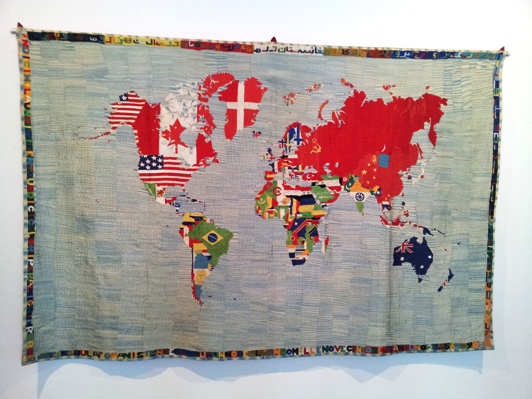Today I guided a Dutch architect researching urban developments in Kabul. After fixing the roaming internet connection on his Apple computer in a record time – praise be to the helpfulness and tech savviness of Afghan shopowners – we drove up TV mountain to take some pictures. He had the good camera, I my phone. The weather was heavily overcast with occasional sunbursts.
Tag Archives: Afghanistan
A visit to Nur Agha the kitemaker

The signature of Ustad Nur Agha, son of Bejo, which name allegedly comes from the Urdu word ‘becchu’, scorpion
Today I took a few hours off work to visit the master kite maker, Nur Agha, son of Bejo, the famous Kabuli kite maker. Continue reading
How the collection of the National Museum of Afghanistan survived the civil war and the looting, 1992-2001
My contribution to the “Art Trafficking and Restitution” roundtable
organized by Walk of Truth at the Peace Palace in The Hague
16 September 2013
Ladies and Gentlemen,
In the late 1970s, when Kabul was still known as a stop on the hippy trail, the city’s museum boasted one of the richest collections of Asia. It spanned from the early Indus valley civilizations to the highlights of Islamic civilization, from Roman glass to Indian ivories; indeed Afghanistan had been the cradle of Zoroastrianism and highly syncretic cultures such as Hellenic Buddhism, producing highly developed art forms unique to this area.
I will describe the actions a few individuals undertook to preserve the most valuable parts of the collection of the National Museum of Afghanistan for posterity. This allowed us all to see the magnificent exhibition of the National Treasures of Afghanistan, in the Nieuwe Kerk in Amsterdam or elsewhere in the world. I have a few books here for those interested
In Memoriam Doctor Niazi
Today I heard that one of my dearest friends died in a car accident on the Kabul-Jalalabad road. Doctor Mohammed Saeed Niazi was a true friend to me; more than that, he was one of those friends that actually defines what friendship means.
The Taliban and The City
In a recent article, Antonio Giustozzi explains how the Taliban have improved their command & control structure. He describes how, under the military pressure of the US and NATO, and with the support of Pakistan’s ISI, the Taliban leadership has become more in control of the movement; and how this centralization alienates some local Taliban commanders and increasingly the population, who now have to deal with rotating commanders instead of well-known local strongmen (‘the devil you know’). Pakistani influence over the Taliban has always been terrible for the movement’s legitimacy among Afghans. On the other hand this centralization has allowed the Taliban to improve their governance and also their public image, as less brutalities are committed in the name of the movement.
Afghanistan in Documenta 13
Note: a very different, one-page graphic version of this article was published in the Belgian art magazine A Prior #23; see the article here. I published another article about this subject in the Indian art magazine Take On Art.
With fourteen Afghan artists and at least ten artists whose work reflects on this country, Documenta 13 is strongly flavored by Afghanistan. After Kassel, Kabul is the main location of Documenta (the others being Alexandria & Cairo, and Banff in Canada): 27 Documenta artists will show their work in the Queen’s Palace in Kabul’s Babur Gardens in an exhibition that opens on June 20. Continue reading
Attack on the Green Zone in Kabul

This unfinished building overlooking the US Embassy compound was probably used by the Taliban in the current attack.
In 2009, while visiting Kabul, I was astonished by the fortifications that had arisen around a large swathe of land comprising the US Embassy, NATO headquarters, the Presidential Palace, key ministries and other embassies. Given the hilly topography and urban layout of Kabul, this cordoning off of a large chunk of the centre caused considerable traffic and access problems for ordinary Kabulis. Continue reading




